Highfield, Harpenden, Hertfordshire
Highfield, one of the largest homes run by the National Children's Home (NCH), was opened in 1913 at Ambrose Lane, Harpenden, just a short distance from the charity's Elmfield sanatorium opened in 1910. Highfield was the successor to the NCH's headquarters home at Bonner Road home at Bethnal Green.

Highfield, Harpenden, site entrance, 2014. © Peter Higginbotham
Like the NCH's Princess Alice Orphanage and Frodsham Home, Harpenden adopted the popular 'cottage homes' layout, with the buildings arranged around a large central green known as The Oval.
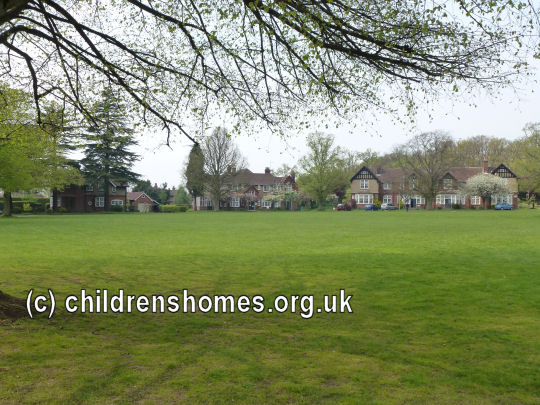
Highfield Oval, Harpenden, 2014. © Peter Higginbotham
The Governor's house lay just inside the entrance driveway.
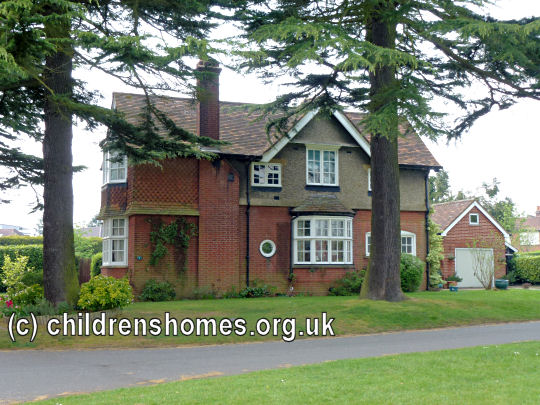
Highfield, Harpenden, Governor's House, 2014. © Peter Higginbotham
The children's houses were in semi-detached pairs, each half containing two homes. In each home, a 'family' group of up to a dozen children lived under the supervision of a house-mother or 'Sister'.

Highfield, Harpenden, family group, date unknown. © Peter Higginbotham
Here is an aerial view of the site in the 1920s which identifies the various buildings at that time:
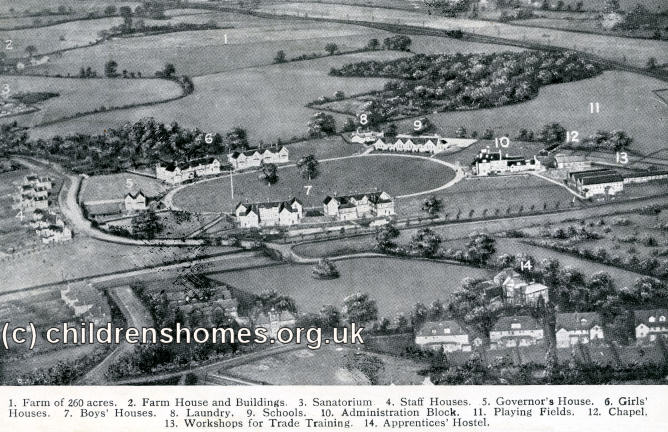
Highfield, Harpenden, aerial view from the south, c.1920s. © Peter Higginbotham
A third house block was later added on the boys' side to give a total of twenty households. These were numbered in an anti-clockwise sequence starting at the entrance at the west of the site and named after benefactors who had donated a thousand pounds or more. The households on the boys' side were: 1-2 Wakefield House; 3-4 Botteley House; 5-6 Old Girls & Boys' (OG&B) Houses; 7-8 Clifton House; 9-10 Ashcroft House; and 11-12 Deakin House. Then came the administration block, school etc. at the east of the green, with the houses on the girls' side continuing the numbering sequence as: 13-14 Mrs Ferens House; 15-16 Walker House; 17-18 Ferens House; 19-20 Barlow House.
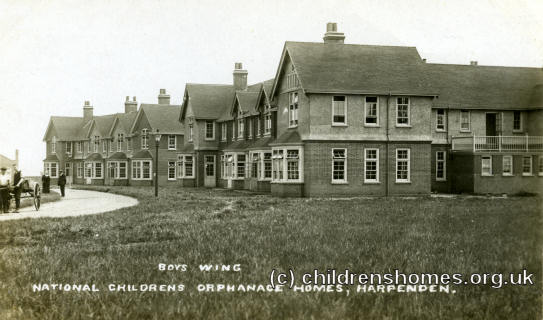
Highfield, Harpenden, boys' homes, c.1913. © Peter Higginbotham
Many of the homes contained memorial stones to their benefactors.
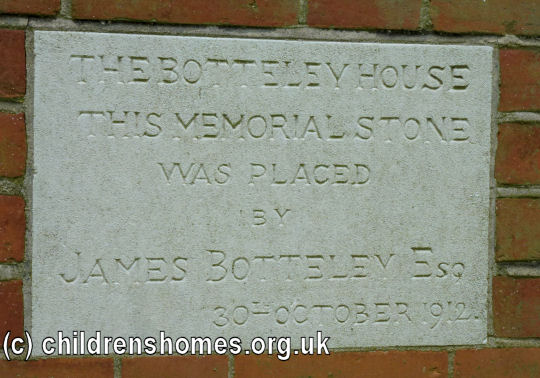
Highfield, Harpenden, Botteley House, 2014. © Peter Higginbotham
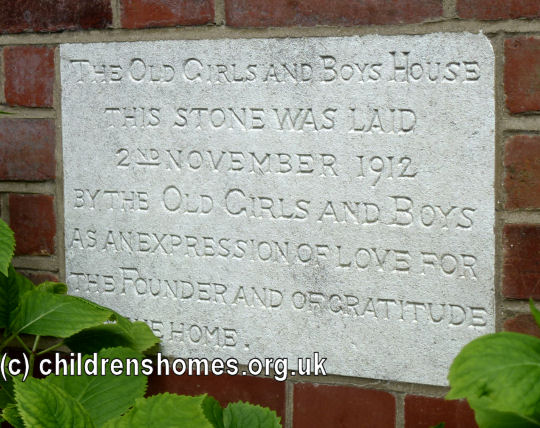
Highfield, Harpenden, Old Girls and Boys' Houses, 2014. © Peter Higginbotham
The block containing the OG&B and Clifton Houses also included memorial stones to prominent NCH figures such as Francis Horner and Alfred Mager.

Highfield, Harpenden, OG&B and Clifton Houses, 2014. © Peter Higginbotham
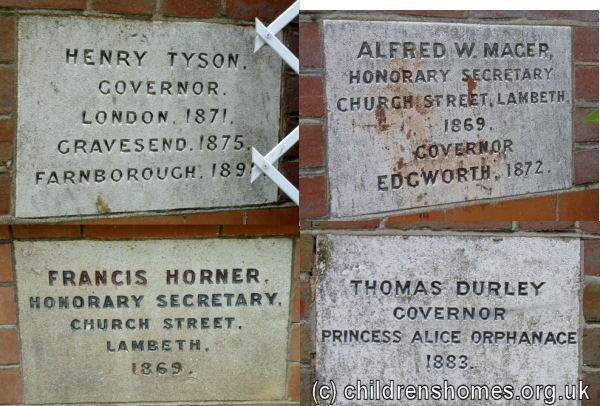
Highfield, Harpenden, OG&B and Clifton Houses, 2014. © Peter Higginbotham
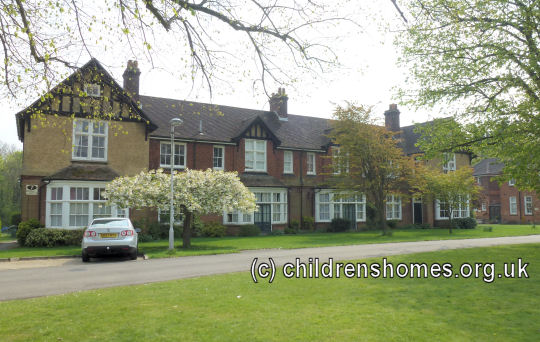
Highfield, Harpenden, Ashcroft and Deakin Houses, 2014. © Peter Higginbotham
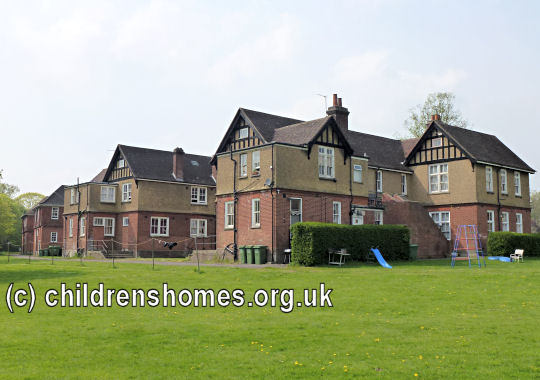
Highfield, Harpenden, rear of boys' houses, 2014. © Peter Higginbotham
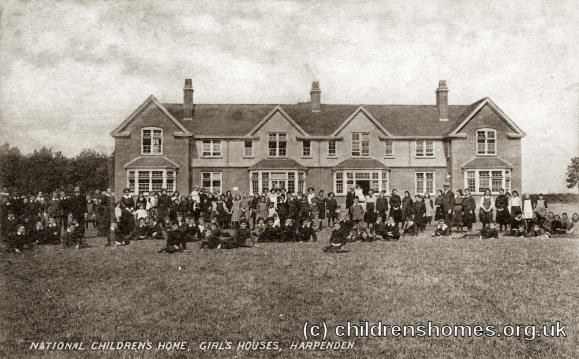
Highfield, Harpenden, Mrs Ferens and Walker Houses, date unknown. © Peter Higginbotham
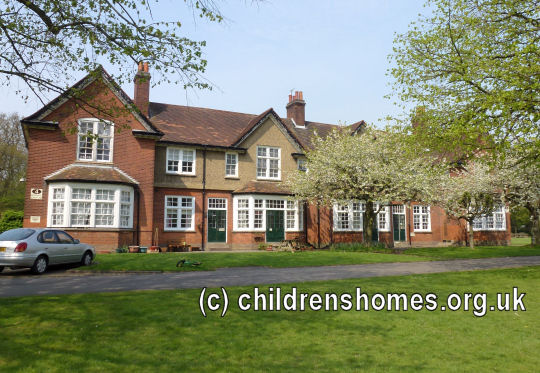
Highfield, Harpenden, Mrs Ferens and Walker Houses, 2014. © Peter Higginbotham

Highfield, Harpenden, Ferens and Barlow Houses, 2014. © Peter Higginbotham

Highfield, Harpenden, Ferens House, 2014. © Peter Higginbotham
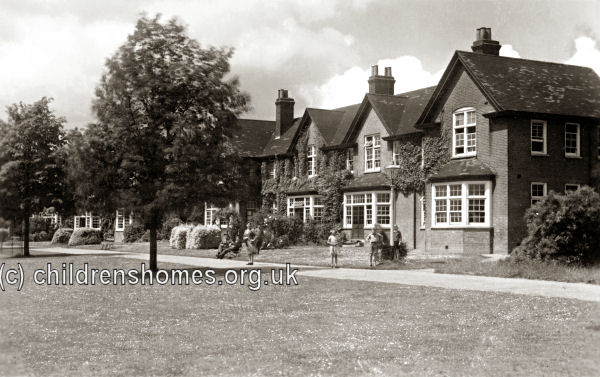
Highfield, Harpenden, date unknown. © Peter Higginbotham
The school building lay to north-east of the oval.
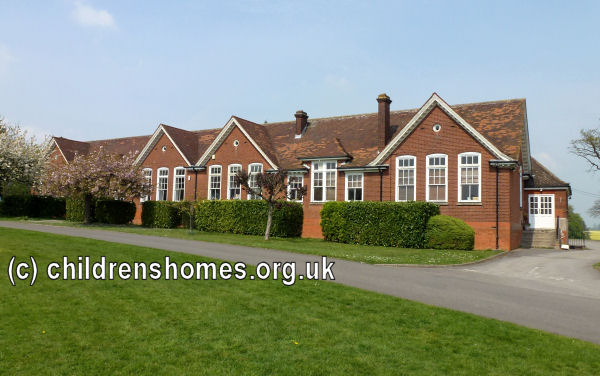
Highfield, Harpenden, school building, 2014. © Peter Higginbotham
Further round to the east stood the Home's administrative department.
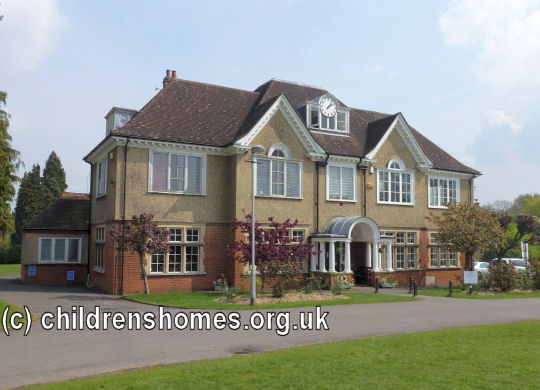
Highfield, Harpenden, administrative department, 2014. © Peter Higginbotham
To its rear stood the Home's original wooden hut chapel.
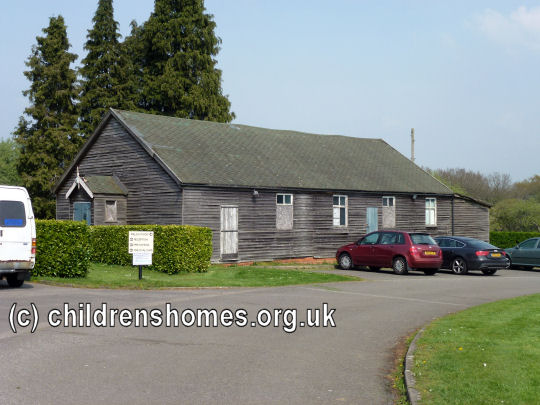
Highfield, Harpenden, original chapel, 2014. © Peter Higginbotham
In 1928, a new chapel was erected between the school and administration building. It was built as a result of a gift from Joseph Rank.

Highfield, Harpenden, new chapel, 2014. © Peter Higginbotham
The windows in the chapel's north and south transepts came from the chapel at Bonner Road and commemorated the NCH founder Dr Stephenson and his wife. The chapel's east and west windows were designed by Frank Salisbury.
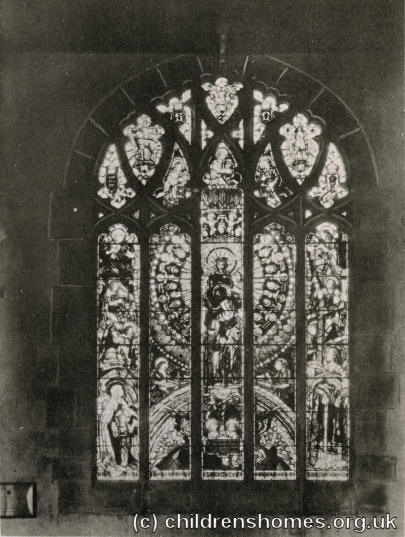
Highfield, Harpenden, chapel west window, c.1928. © Peter Higginbotham
The old chapel was subsequently used by the Home's Girl Guides company.
A hospital block was placed between the Governor's house and the girls' houses.

Highfield, Harpenden, hospital block, c.1930. © Peter Higginbotham
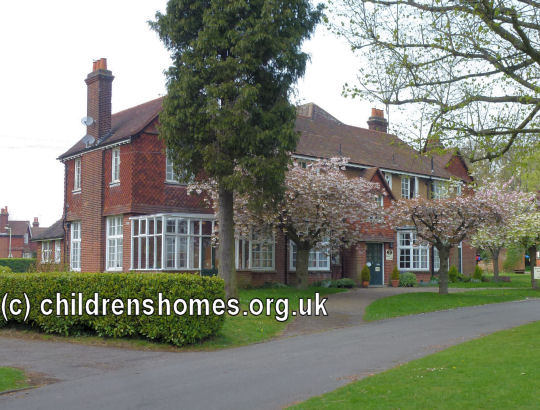
Highfield, Harpenden, hospital block, 2014. © Peter Higginbotham
The later aerial views below show the addition of the additional buildings:
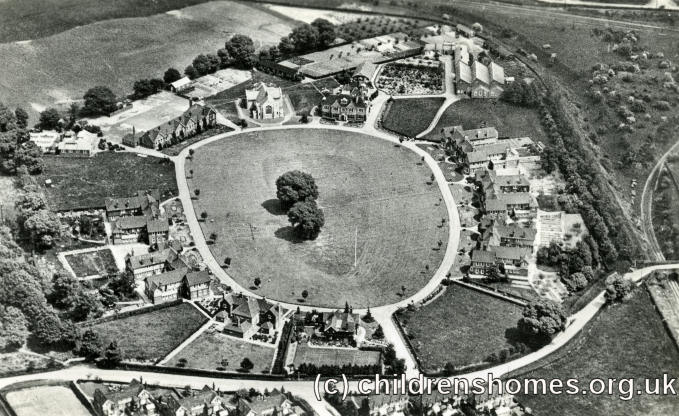
Highfield, Harpenden, aerial view from the west, 1930s. © Peter Higginbotham
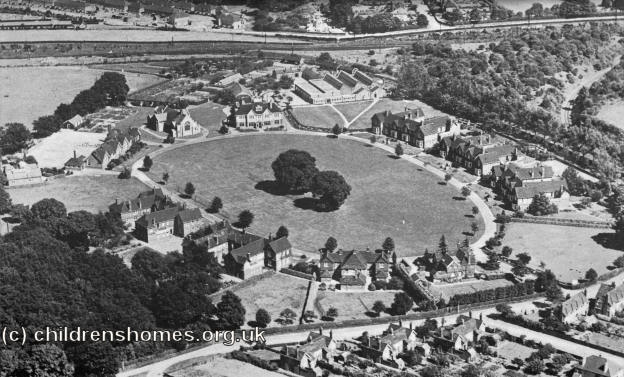
Highfield, Harpenden, aerial view from the west, 1930s. © Peter Higginbotham
As well as basic education, children at the home were given "industrial training" to help make them more employable in later life. For the girls, this was in tasks such as laundry work, dressmaking and cookery, to prepare them for domestic service.
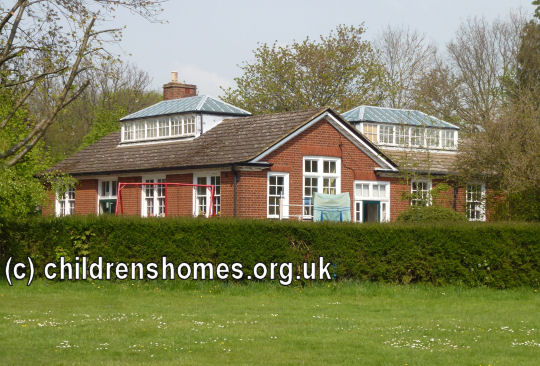
Highfield, Harpenden, laundry block, 2014. © Peter Higginbotham
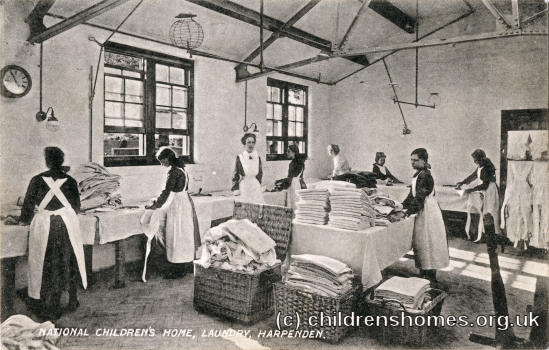
Highfield, Harpenden, the laundry, date unknown. © Peter Higginbotham

Highfield, Harpenden, the laundry, date unknown. © Peter Higginbotham
Training for the boys included carpentry, plumbing, shoemaking, baking and farm work — the home had its own farm on Cooter's End Lane, to the north-west of the main site.
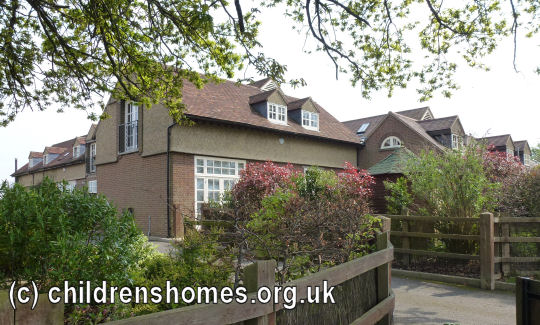
Highfield, Harpenden, former farm site, 2014. © Peter Higginbotham

Highfield, Harpenden, boys shoemaking, date unknown. © Peter Higginbotham

Highfield, Harpenden, boys shoemaking, date unknown. © Peter Higginbotham
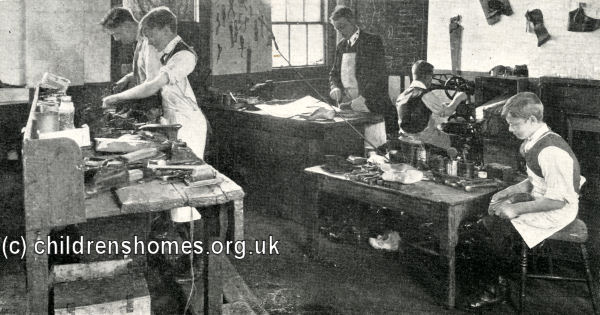
Highfield, Harpenden, carpentry workshop, date unknown. © Peter Higginbotham
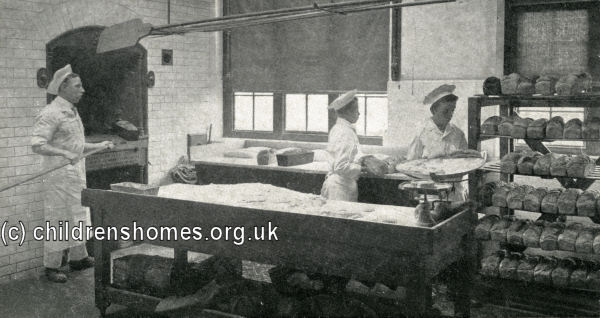
Highfield, Harpenden, bakery, date unknown. © Peter Higginbotham
With the closing of Bonner Road, the NCH's printing department moved to Highfield. As well as providing another avenue of training, the department produced all the charity's printed matter.
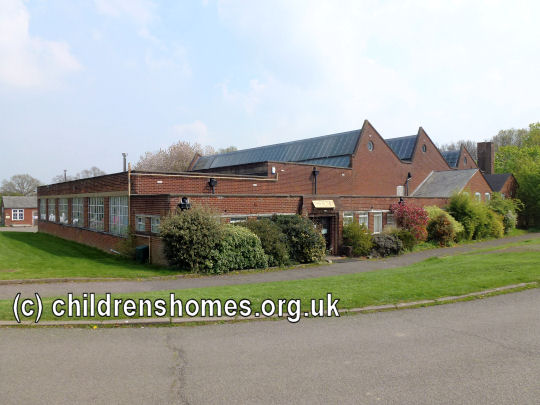
Highfield, Harpenden, printing department, 2014. © Peter Higginbotham
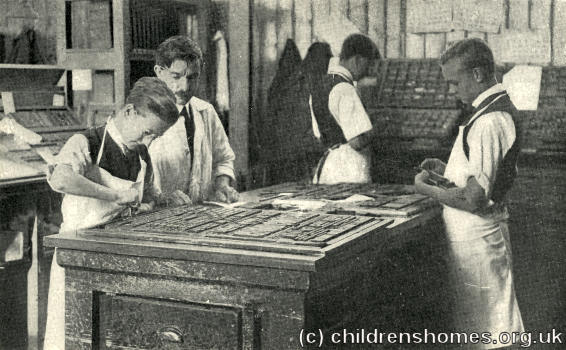
Highfield, Harpenden, printing department, date unknown. © Peter Higginbotham
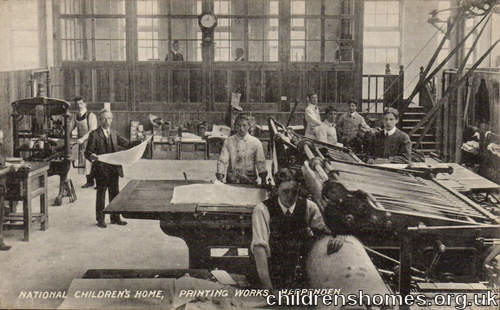
Highfield, Harpenden, printing department, date unknown.
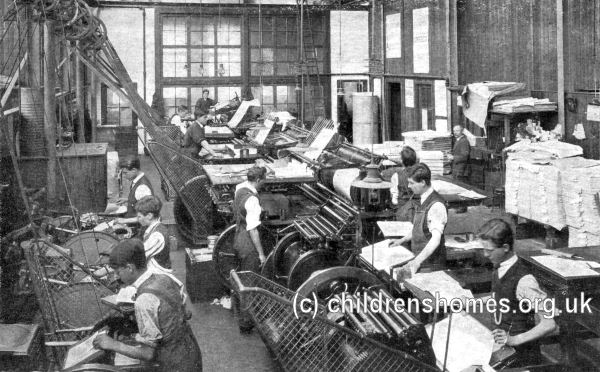
Highfield, Harpenden, printing department, date unknown. © Peter Higginbotham
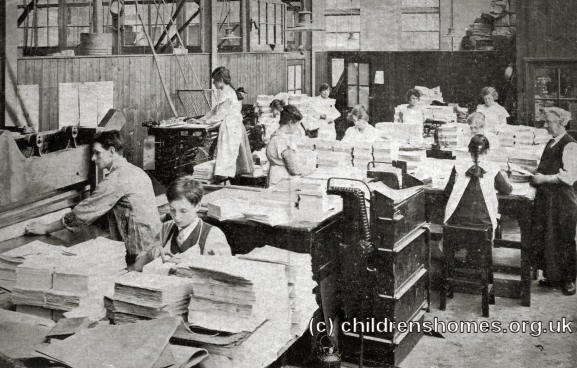
Highfield, Harpenden, binding department, date unknown. © Peter Higginbotham
Music was an important feature of education at the home. Boys could join the home's wind band which could lead to a career as a military bandsman. The home's choir, still known as the 'London Choir' for a number of years after the move to Harpenden, was well regarded and regularly gave public performances.
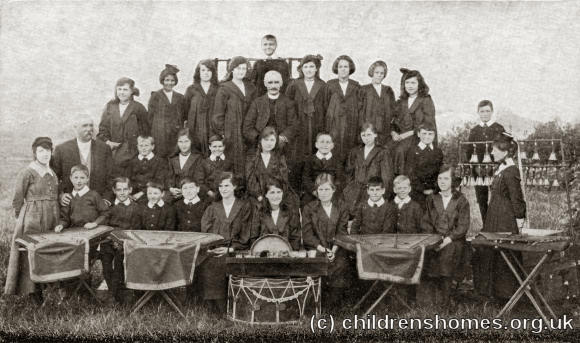
Highfield, Harpenden, the 'London' Choir, date unknown. © Peter Higginbotham
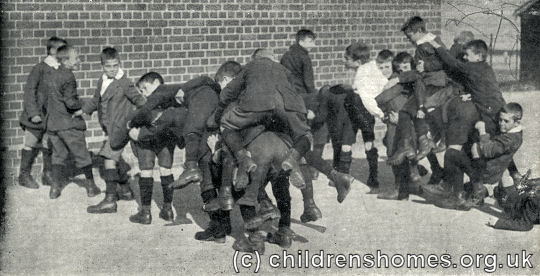
Highfield, Harpenden, playground, date unknown. © Peter Higginbotham

Highfield, Harpenden, date unknown. © Peter Higginbotham
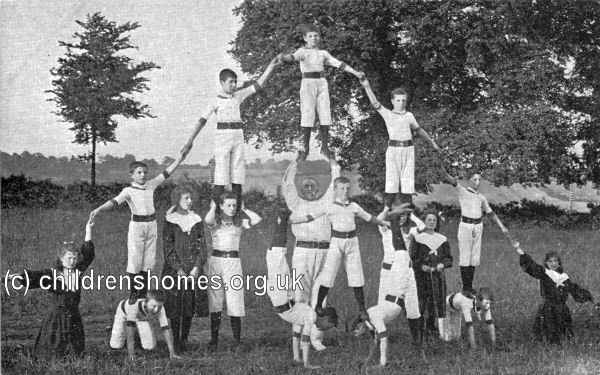
Highfield, Harpenden, date unknown. © Peter Higginbotham
In 1951, Lea House, previously used to accommodate older girls, was converted to a diabetic unit.
The home closed in 1985. The buildings are now occupied by the organisation Youth With A Mission.
Records
Note: many repositories impose a closure period of up to 100 years for records identifying individuals. Before travelling a long distance, always check that the records you want to consult will be available.
- Action For Children (formerly the National Children's Home). Can provide access to their own records for individuals who were adopted through the charity or who resided in one of its homes. Help also for those searching for family history information.
Bibliography
- Bradfield, William The Life of the Reverend Thomas Bowman Stephenson (1913, Kelly)
- Curnock, Nehemiah The Story of the Children's Home (C.H. Kelly, 1901)
- Higginbotham, Peter Children's Homes: A History of Institutional Care for Britain's Young (2017, Pen & Sword)
- Horner, Francis Shadow and Sun (Epworth Press, 1920)
- Howard, Philip J Philip: a Strange Child (Dalkeith Publishing, 2007)
- Philpot, Terry Action For Children (Lion, 1994)
- Walpole, Cecil F. Golden Links (Epworth Press, 1941)
Links
- Action For Children.
- Their History — a website on the homes by a former resident.
- Growing up in the NCH — a forum for those who spent time in NCH homes.
Films
- Scenes from various NCH Homes — 1960s film footage.
- NCH Documentary (1954) Part 1 — Arriving at Harpenden.
- NCH Documentary (1954) Part 2 — Harpenden Oval.
- NCH Documentary (1954) Part 3 — Annual Convocation, Alverstoke
- NCH Documentary (1954) Part 4 — Special facilities at Danesford, Chipping Norton, Harpenden and Frodsham.
- NCH Documentary (1954) Part 5 — Founders Day at Princess Alice Orphanage; training at Harpenden.
- NCH Documentary (1954) Part 6 — Harpenden.
- NCH Documentray (1964) Part 1 — Disabled and special needs at Harpenden and Chipping Norton
- NCH Documentary (1964) Part 2 — Disabled and special needs children at Harpenden, Edgworth, Chipping Norton.
- NCH Documentary (1964) Part 3 — Harpenden, Edgworth, Chipping Norton.
- NCH Documentary (1964) Part 4 — Alverstoke.
- NCH Documentary (1964) Part 5 — Alverstoke.
- NCH Documentary (1964) Part 6 — Alverstoke.
- NCH Frodsham (1960s) Part 1
- NCH Frodsham (1960s) Part 2
- NCH Brackley (1960s)
- Danesford School (1960s)
Except where indicated, this page () © Peter Higginbotham. Contents may not be reproduced without permission.


